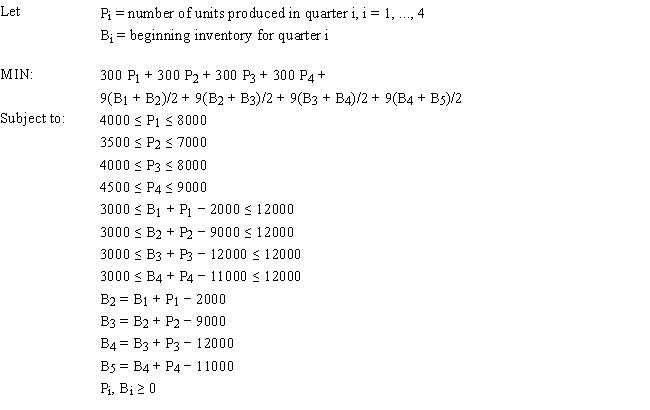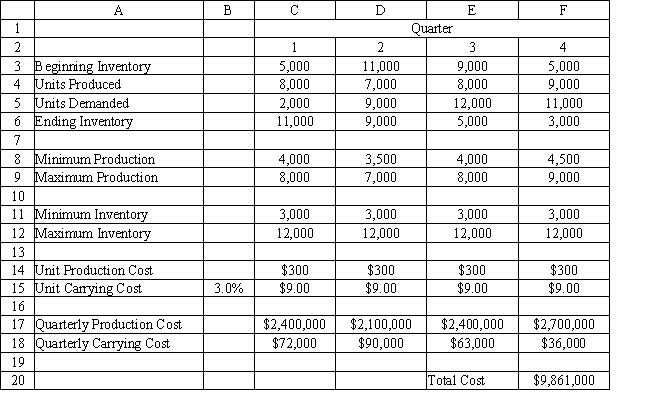Exhibit 3.5
The following questions are based on this problem and accompanying Excel windows.
A company is planning production for the next 4 quarters. They want to minimize the cost of production. The production cost is stable but demand and production capacity vary from quarter to quarter. The maximum amount of inventory which can be held is 12,000 units and management wants to keep at least 3,000 units on hand. Quarterly inventory holding cost is 3% of the cost of production. The company estimates the number of units carried in inventory each month by averaging the beginning and ending inventory for each month. There are currently 5,000 units in inventory. The company wants to produce at no less than one half of its maximum capacity in any quarter. 


-Refer to Exhibit 3.5. What formula should be entered in cell C6 in the accompanying Excel spreadsheet to compute ending inventory?
Definitions:
Negotiation Record
A detailed account of negotiation proceedings, including the proposals, discussions, and agreements made between parties.
Public Sector
The portion of the economy composed of government services and enterprises, including employees who work for government entities.
Essential Services
Services considered necessary for the safety, health, and welfare of the public, which may be exempt from labor strikes.
Economic Markets
Systems where parties engage in exchange of goods, services, and information, often regulated by supply and demand.
Q10: In the generalized network flow problem solver
Q23: A vendor offers 5 different prices per
Q42: A cellular phone company wants to locate
Q51: A facility produces two products and wants
Q64: Which method is preferred for solving minimal
Q135: In a linear equation relating income and
Q150: Recessions are characterised by points that are
Q172: If the equation y = 5 +
Q180: Refer to the above diagram. The variables
Q227: Refer to the above diagram for athletic